What and how to feed the cockerel fish?
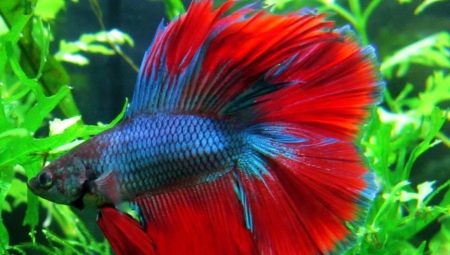
Aquarium cockerels are a rather popular type of fish. They attract attention with their unusual appearance as well as fighting behavior. Of course, feeding deserves special attention, because only knowing what and how to feed properly can provide a comfortable life for your pets. Let us consider in more detail what the bettas eat, the volume of their portions and the intricacies of feeding, as well as what to do if the fish refuses to eat.
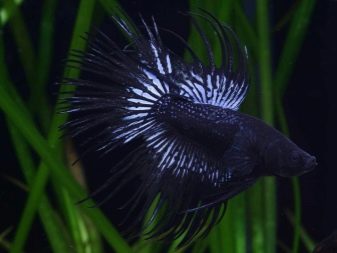
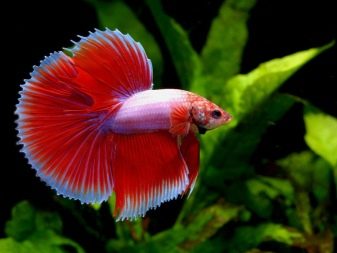
What do they eat at home?
Many today have a cockerel fish because it has an attractive appearance. It is omnivorous, but it is worth noting that such a fish does an excellent job of being a predator. Therefore, they should be fed primarily with protein foods. The diet of the cockerel fish should be varied. Consider what products are required in the diet of this fish.
- Flakes. They are not expensive, but they are not recommended to be given very often. If the fish does not want to eat them, then it is worth replacing this food.
- Granules. These are specially formulated foods that can be easily purchased at the pet store. Such food is essential for fish. It is worth noting that the size of the granules should be small, because large elements quickly sink to the bottom of the aquarium - as a result, the fish regards them exclusively as waste.
- Dry food. This food option is also mandatory. It is represented by processed bloodworms and brine shrimp. Cockerels love this kind of food.
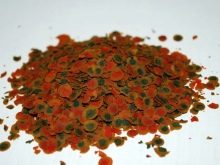
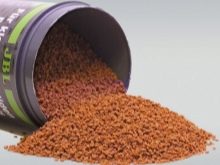

You can feed the cockerel with food such as bloodworms, brine shrimp or daphnia, both live and frozen.Frozen worms are great - vitreous worms are quite difficult to find on sale, but live worms are best avoided, since they may contain parasites. The diet of cockerels should include frozen shrimp meat and beef heart, live insects, earthworms, as well as scalded spinach or lettuce leaves.
It is worth remembering that fresh and dry food should not be interfered with. It is better to refuse to combine food right away. If the fish consumes a lot of dry food, then this will definitely negatively affect its health.
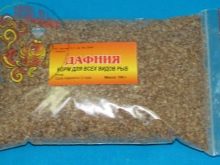
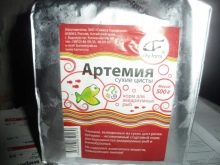

How often should you feed?
Initially, it should be noted that the aquarium cockerel does not need multiple meals. It is enough to organize feeding 1-2 times a day, because excess food will bring them extremely harm. Experts recommend doing a fasting day for the fish once a week. This approach will ensure that the fish in the aquarium is cleansed.
It should be understood that the nutrition of the fry and the adult will differ in many respects. Plankton is the norm for small fish.
When the cockerel grows up, then it is worth introducing bloodworms and brine shrimp into his diet. It should be remembered that young animals should be fed 4 to 6 times a day, gradually decreasing the number of feedings as they grow older.
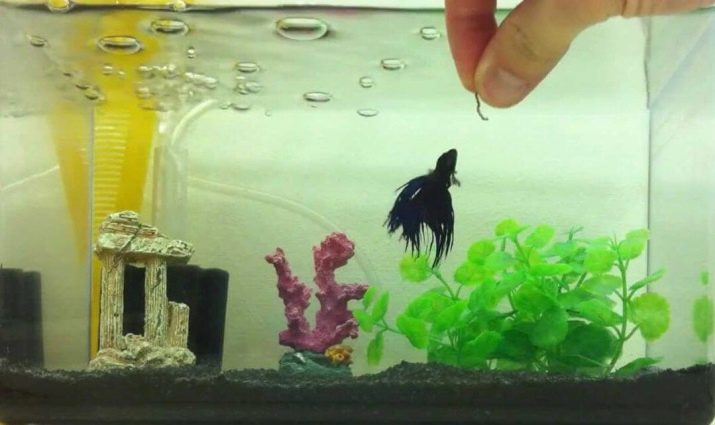
Serving size
It is very important to determine the amount of food for your aquarium cockerels. Food leftovers have a negative effect on the condition of the water. And if you do not change it in a timely manner, then the fish will start to hurt. If the serving size is more than the norm, then the fish overeat, which leads to the following symptoms:
- bloating;
- tail and fins are down;
- unwillingness to eat;
- a manifestation of the character of a predator - the fish rushes at other fish;
- the fish is always in no mood.
To correctly determine how much food to feed the cockerel, just pour dry food into the aquarium and see how much food the fish can eat in about 3-4 minutes. This amount will become the optimal serving size for the fish. Usually it leaves no more than 5% of the total weight of the fish. It is advisable to remove the remnants of feed immediately to prevent water contamination.

Interestingly, cockerel fish can live from 2 to 3 weeks without food. Let's take a closer look at the diet for one meal for a male:
- dry granules - 1-2 pcs .;
- medium flakes - 2-3 pcs .;
- bloodworms - 2-3 worms.
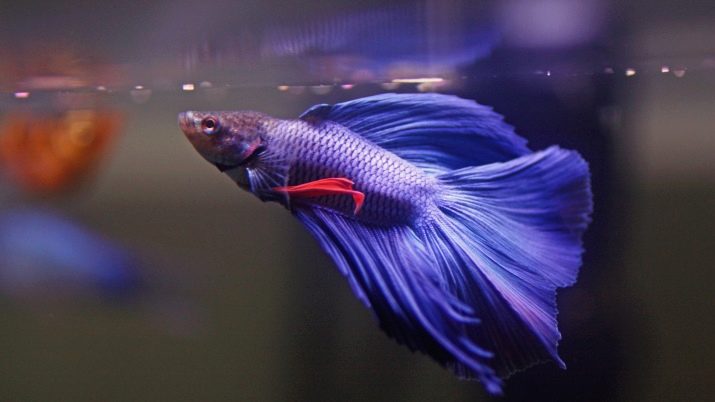
How to feed correctly?
Experts advise feeding the cockerel fish at the same time. If the fish are accustomed to the routine, then at a certain time all the males will wait for food together, while you can be sure that all the individuals will remain full. You can do a certain action each time before feeding, for example, hitting the glass. This ritual will soon be associated with feeding in the fish, they will immediately swim to the feeder. It is enough to feed adult fish once a day.
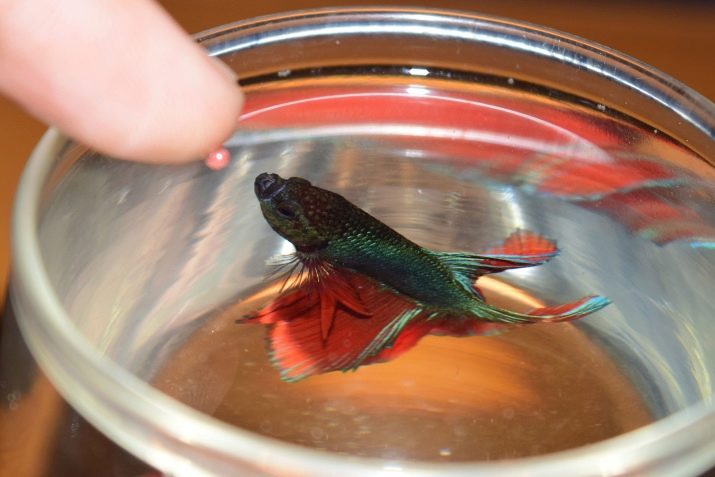
What if they don't eat well?
The cockerels eat pretty well, they don't need to be invited to dinner twice. But there are times when the fish do not pay attention to the food or simply start to spit out the already chewed food. To cope with the problem, it is necessary to initially recognize the cause, and there may be several of them.
Adaptation
After moving from a pet store to a new aquarium, where there is different lighting, water temperature, and so on, the fish goes through an adaptation stage - getting used to new conditions. During this period, she may not pay attention to food. This period usually takes no more than 7 days. If the cockerel feels great, only refuses to eat, then you need to give him time to adapt.
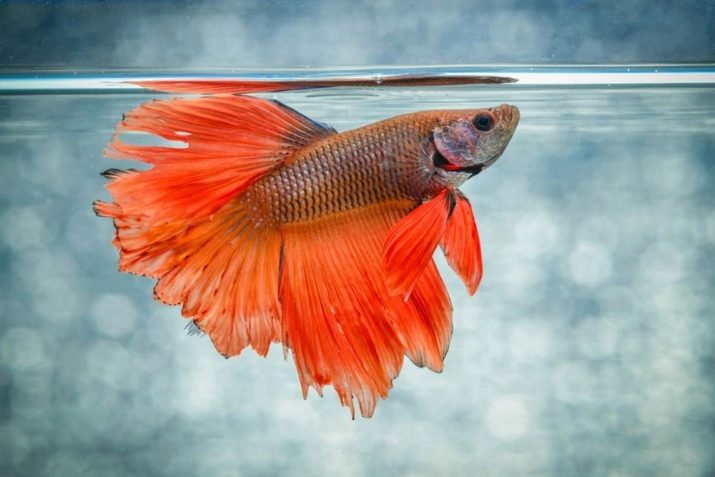
Improper care
The cockerel fish is a tropical species, which needs the following conditions:
- the volume of the aquarium - at least 5 liters;
- temperature - from +26 to +28 degrees;
- balance of light;
- clean water - 5 minutes after feeding, all residues must be removed.
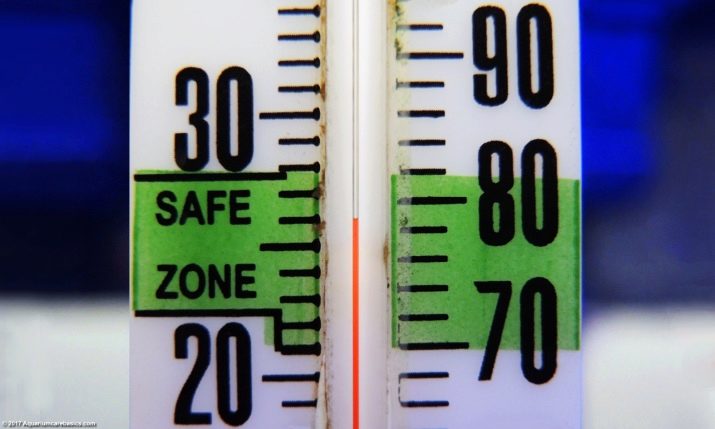
If you do not adhere to the above conditions, then the fish can not only refuse to eat, but also die.Therefore, if she does not want to eat, then it is worth assessing the conditions of the aquarium. If you put a rooster in a three-liter jar, then he will definitely stop eating from sadness. The optimal aquarium is 7-10 liters, if, in addition to cockerels, other fish live in the aquarium, then its volume should be at least 20 liters, or even all 30 liters.
If the water temperature drops below +26 degrees, then the fish will also begin to starve. Males can swallow air through their mouths, so you can save money on the purchase of filters, but the temperature of the water should be kept under all circumstances.
It is worth making sure that the hardness of the water is from 4 to 15 units, and the pH level is 6-7.5. The fish should be at rest for about 6-8 hours, at this time it is worth turning off the light in the aquarium.
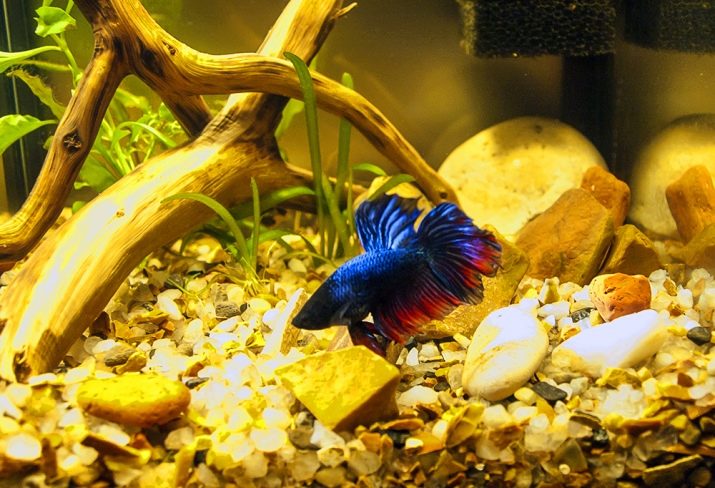
Food preferences
Males eat live food well, dry and even frozen food. But it is worth remembering that they get used to a certain diet. If the fish in the pet store are accustomed to one brand of food, then they may not like others, in this case it is worth asking the seller of the fish for the name of the food. You can replace dry food with live food, since its males eat more readily. If you are throwing pellets to the fish, you should pay attention to their size, perhaps it is too large for "kids".
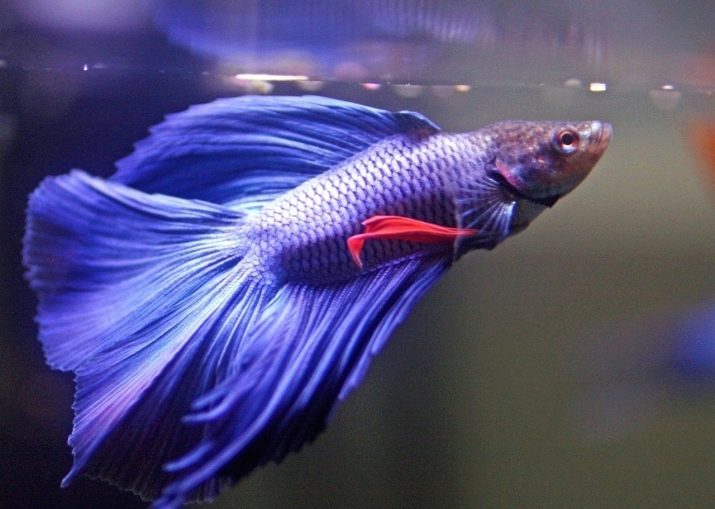
Diseases
Of course, illness can also lead to food refusal. Betta fish quite often suffer from fin rot, starting from various infections. This disease leads to the destruction of the fins - as a result, the fish dies. The symptoms of this disease are as follows:
- prolonged refusal to eat;
- fins become cloudy;
- the fish begins to move less;
- the eyes become cloudy;
- white specks appear on the scales.
It is worth using drugs of both antifungal and antibacterial spectrum of action. If the treatment of the disease is started on time, then it can be defeated.
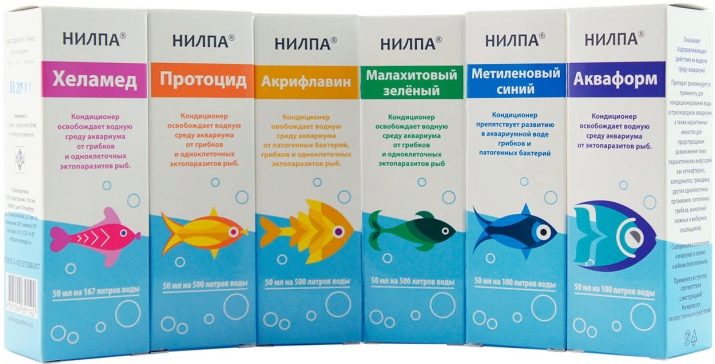
Aquarium cockerels also suffer from "semolina" or ichthyophthiriosis. The peculiarity of this disease is that white nodules begin to appear on the body of the fish. This disease is changing, every year its treatment requires new means. This disease can be accompanied by the following symptoms:
- fish spits out food;
- begins to lead a sedentary image;
- floats in jerks;
- tries to rub against the substrate.
The main cause of this disease is the violation of sanitary standards. It is worth resorting to medications, as well as heating the water in the aquarium to +30 degrees, while maintaining this temperature for several days, then it will be easier to cope with the disease.
For the maintenance and care of cockerel fish, see the video below.








